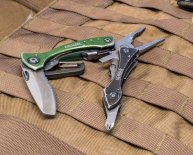
Antique Swords value
 “How much is this old samurai sword worth?” If you inherited, bought or in possession of an antique katana, tanto or wakizashi, you may have already asked this question.
“How much is this old samurai sword worth?” If you inherited, bought or in possession of an antique katana, tanto or wakizashi, you may have already asked this question.
Traditional samurai swords have the finest blades ever hand-forged making them highly valuable. Moreover, collectors are keen to purchasing new unique and genuine samurai swords further increasing their market value.
Determining the worth of your samurai sword requires a certain degree of expertise that only trained professional appraisers have.
If you take convenience into account, sending the sword to an appraiser is the best way to find out its worth. However, you need to be prepared to shoulder the cost. If you’re certain that you have a valuable sword, don’t think twice about sending it for appraisal.
Another option is to inspect the sword yourself to assess if it’s worth something or not. By self-appraising your samurai sword, you can pre-determine its price which will serve as a factor when choosing between having it professionally-appraised or not.
On the whole, self-appraisal is a simple examination of your samurai sword. The process involves checking the authenticity of the sword, followed by identifying its type, age and quality.
 Do you have an authentic samurai sword?
Do you have an authentic samurai sword?
A samurai sword undergoes several tests to prove its authenticity. For this pre-assessment, you only need to check the metal of the blade.
Place a magnet near the blade of your samurai sword. Real swords should be attracted to the blade, replicas and fakes made of aluminum won’t.
What type of old Samurai sword do you have?
Japanese samurai swords come in three types namely, tanto (short), wakizashi (medium) and daito (long). Each has its own worth in the sword collecting market.
• Tanto is a small knife or dagger measuring 16 to 30 cm. A genuine antique tanto will be priced, at least, USD 500.
• Wakizashi is a medium-sized sword with a length of 30 to 60 cm. This medium sword is usually partnered to a katana. A wakizashi in good condition can fetch a price around USD 700.
 • Daito is the long sword equivalent of Japan measuring more than 60 cm in straight length. There are two types of daitos: the tachi and katana.
• Daito is the long sword equivalent of Japan measuring more than 60 cm in straight length. There are two types of daitos: the tachi and katana.
Tachi (75 to 80 cm) is worn edge down hanging on a cord on a belt with its edge facing downwards. It is popular in medieval to early 16th century Japan. Katana (70 to 74 cm) is worn through a sash, usually paired with a shorter blade, with its edge up. The katana became popular from early 1600s to the end of the Edo period (1867).
An unmounted tachi or katana will be priced between USD 2, 000 to USD 5, 000 depending on the period from which it was forged.
How old is your old Samurai sword?
It takes an expert to find out the age of a sword. Dating includes examination of the markings on the sword’s tang (nakago) and verifying the identity of the sword smith.
 For this initial assessment, you only have to set a “relative age” of the sword through the condition of its tang.
For this initial assessment, you only have to set a “relative age” of the sword through the condition of its tang.
Over time, the sword’s tang accumulates rust. Filings and markings on it slowly wear off. A sword with a tang that is browned or blackened with rust is likely to be at least a century old whereas silvery tang with little or no sign of degradation suggests younger age.
Overall condition of your old Samurai sword
The condition of a samurai sword has significant effects on its price. A good-looking sword with minimal damages on its blade will be priced more than a rusted blade.
Any battle-ready swords are expected to have a certain degree of damages. Slight rusting, shallow dents and scratches anywhere on the blade except the sharp edge will not decrease its price.
What collectors avoid are overly-rusted blades. Any dents, cracks and chips on the sharp edge of the blade will devalue the sword. A blade with a deep dent, crack or chip measuring more than half a centimeter will be deemed uncollectible by most collectors.
Any missing samurai sword component can decrease its price. A missing guard, or tsuba, will reduce the sword’s price by 10% while a sword without a scabbard, or saya, will be devalued to around 30%.
Samurai swords were more than just implements of killing, they are also considered symbol of rank and prestige. More importantly, samurai swords are works of art.
Engravings on any part of a samurai sword suggest used by a prominent individual and can increase its price by, at least, 5%. The more elaborate the engravings are, the more expensive the sword becomes.
You should now have a well-founded opinion of the value of your old samurai sword. The next step is to decide whether to send it for a professional appraisal or not.
Always remember that the price set during an appraisal, by you or with a professional, is simply an opinion of its potential worth. The actual value of your samurai sword is the amount that the collector is willing to pay for it.

















